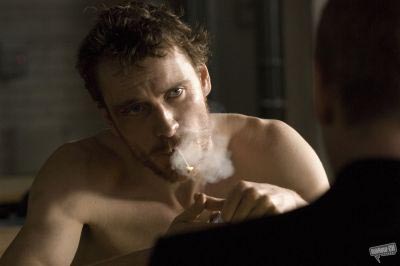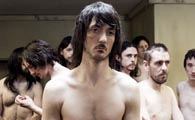Hunger - Harrowing film portrait of IRA hunger striker Bobby Sands

Artist Steve McQueen (no relation to the screen legend) ventures out of the art gallery and into the cinema with Hunger, a controversial movie about IRA hunger striker Bobby Sands that’s been praised to the heights and damned to the depths in equal measure. It scooped the Camera d’Or award for best first-time director at this year’s Cannes Film Festival, was shown recently to great acclaim at the London Film Festival, and has predictably left the tabloid press frothing with fury.
Ostensibly, McQueen’s movie doesn’t take sides. A winner of the Turner Prize in 1999 (beating Tracey Emin, no less), he made his name in the art world with a series of austere and minimal short films, and austerity and minimalism is what he delivers here with a succession of long takes, sparse dialogue and static, near abstract shots. This is art-house cinema at its most rigorous. As far as McQueen is concerned, Hollywood is on another planet entirely.
He begins his film with wordless scenes of a prison officer in 1981 Northern Ireland starting his day: soaking his bloodied knuckles in the bathroom sink, silently eating his breakfast and then routinely checking beneath his car for explosive devices before he leaves home, while his wife watches anxiously from behind the net curtains.

Then McQueen plunges the viewer into the heart of the notorious H-Blocks of Belfast’s Maze Prison, where IRA prisoners are staging their so-called ‘dirty protest’ in a bid to win political status, spilling their urine into the corridors and smearing their cells with excrement – a gesture that acquires an almost abstract-art quality. (As McQueen’s camera lingered on the shit-bedaubed walls, I couldn’t help thinking of McQueen’s fellow Turner Prize winner Chris Ofili and his ‘elephant dung’ paintings).

We also get an unflinchingly view of the violence meted out by the guards, and as the batons rain down on the naked bodies of the prisoners (naked because they wrap themselves in blankets rather than wear prison uniform), McQueen is clearly inviting us to draw comparisons with the brutal treatment of prisoners in Abu Ghraib and Guantánamo Bay.
All this unfolds with minimal dialogue until a remarkable 22-minute scene in which Michael Fassbender’s Bobby Sands debates with a Catholic priest played by Liam Cunningham about his decision to go on hunger strike. The episode is an astonishing tour-de-force, filmed in a nearly unbroken take by an unmoving camera as the pair thrash out the ethics of Sands’ decision to starve himself to death. McQueen’s lens may not budge, but the scene is as gripping as anything in Quantum of Solace with its rapid-fire editing.
Then we get an equally unblinking view of Sands’ physical decline, as his body breaks down and his mind drifts in and out of consciousness (conveyed with method acting conviction by Fassbender, who lost 14kg for the role). Sands’ eventual death comes on the 66th day of his fast, on 5th May 1981.
The latest updates, reviews and unmissable series to watch and more!
McQueen’s stance is supposedly even-handed, but it’s clear where his sympathies lie – firmly with Sands and his fellow prisoners. We witness the brutality of the state, as represented by the prison guards, but not the atrocities carried out by the IRA. Admittedly, the film does show a single act of republican violence and it is horrifyingly savage, but in the course of the film’s narrative it comes across as an act of payback. Similarly, the film’s only dissenting voice is that of Cunningham’s priest, and while he objects to Sands’ strategy he is sympathetic to his cause.
Not that you would learn anything about the Troubles from Hunger: McQueen deliberately withholds any context to the events he portrays. So you won’t discover the background to the IRA’s campaign, nor the cause of Sands’ imprisonment. And as the Sands of this portrayal takes on more and more of the attributes of a religious martyr, you have to step back from the film to remind yourself that his struggle was to legitimise political violence.
None of this detracts from Hunger’s power as a film. McQueen is clearly a major talent and he has produced a work that is emotionally harrowing and artistically audacious. A ‘balanced’ film wouldn’t have been nearly so effective, but for all Hunger’s strengths, its veiled romanticising of Sands and the IRA left me distinctly uneasy.
A film critic for over 25 years, Jason admits the job can occasionally be glamorous – sitting on a film festival jury in Portugal; hanging out with Baz Luhrmann at the Chateau Marmont; chatting with Sigourney Weaver about The Archers – but he mostly spends his time in darkened rooms watching films. He’s also written theatre and opera reviews, two guide books on Rome, and competed in a race for Yachting World, whose great wheeze it was to send a seasick film critic to write about his time on the ocean waves. But Jason is happiest on dry land with a classic screwball comedy or Hitchcock thriller.


